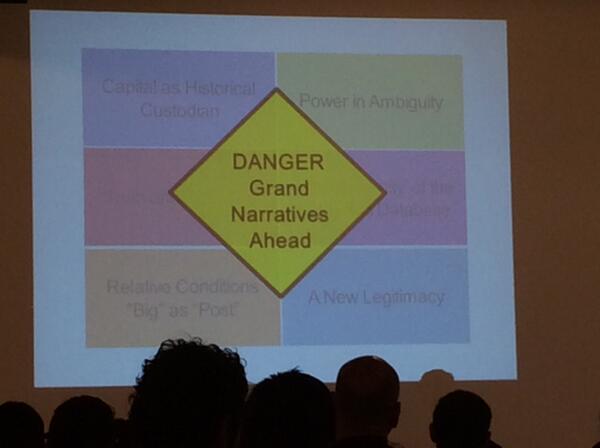Hundreds of smart, stylish and intelligent people met in Brooklyn for two days in April. But this wasn’t just a hipster meetup in Williamsburg it was the venue for the refreshingly interesting Theorizing the Web conference.
Setting the conference in a studio was a fun idea. The space was made up of large, mostly white, rooms and were a fun backdrop for the creative lineup of speakers all exploring the many exciting things the web have brought our society.
With three parallel sessions going on at all times and a very active twitter back channel the experience is exciting and intense. And unfortunately this also leaves the visitor with the experience that there was so much happening elsewhere. The good news is that everyone gains their own personal conference experience.

Photo @jeffreykeefer
Some of the highlights of my conference were @the_log_lady on the poetics of image search, @OddLetters brilliant analysis of the gay girl in Damascus, @AnneLBurns on disciplining the duckface, @mathuclair provoking thoughts on neoliberalism and digital technology, and @hegemonyrules on assholes on reddit.
Now that I look through the program I realize how much I missed and how much more I would have loved to see. The joy of the conference however is the chance to participate, present (I spoke about the impact of e-books on culture) and to talk to smart people with a burning interest for the was in which the web is changing our lives.
Thankfully the sessions were both livestreamed and recorded and can still be accessed here.
